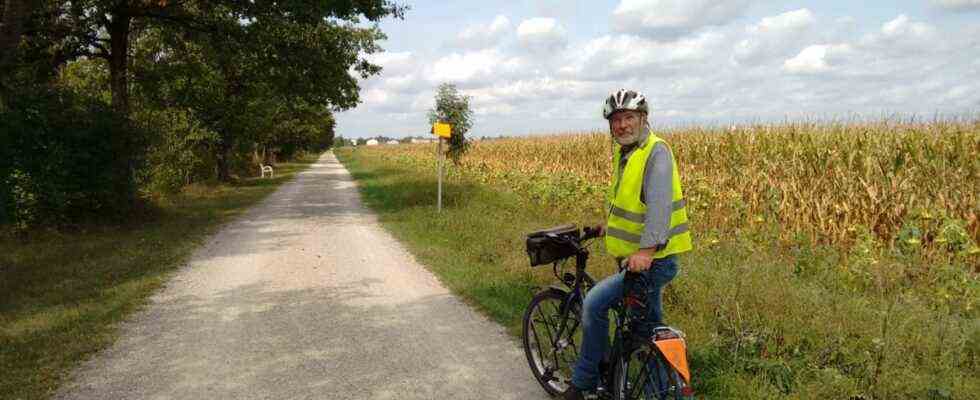Garching’s mayor Dietmar Gruchmann (SPD) found words of warning when the discussion in the city council threatened to tip over into fundamentals again. “If we don’t get that right now, there won’t be the cycle expressway through Garching to the research center,” said Gruchmann. A planning stop after six years because there is no agreement at the municipal level about the route? None of the city councilors wanted to support that. After a long exchange of arguments, the local politicians finally found a route, even if the vote on some sections was extremely tight.
According to the will of the city, the rapid cycle route, which connects the center of Munich with the university town of Garching in the northern district and the campus of the Technical University there, should branch off from the B 13 in the west to the east and, if possible, on the southern edge of the local park in Hochbrück, so as not to bring too much bike traffic into the park. However, the city and district still have to clarify with the nature conservation authorities where exactly a route is possible.
Over the bridge – which will probably be renewed in the course of planning – the cycle path continues on the existing gravel path north of the canal, which is being expanded for this purpose, then follows the subway line on the western subway accompanying path to in front of the subway -Brueck train station. There the expressway crosses the subway tracks on the eastern side and passes the subway station to the east. In future, cyclists will be able to cross the park-and-ride area and the transverse B 471 via a newly built bridge that connects to Zeppelinstraße on the north side of the main road.
The cycle route continues north on the east side of Zeppelinstrasse and then turns right into Schafweideweg. The roundabout at the end of Zeppelinstrasse is likely to be a sticking point that the planners have to solve – it is the entry and exit point for many companies on the Business Campus. At the end of the Schafweideweg the route turns left to the north into the street Am See, which is already marked as a bicycle route. Contrary to what had been considered in a previous workshop, the majority of the Garching city council was in favor of not running the route via the motorway bridge in the north of the Garching corridor over the A 9, but rather branching off to the east via the so-called Egernfeld bridge.
The city’s bicycle commissioner, Rudolf Naisar, and the ADFC, among others, had advocated this variant in advance. According to the planners commissioned by the Wipfler Plan office, the advantage is that the Egernfeld Bridge in its current state allows a generous five meters of lane for cyclists and agricultural traffic plus a two-and-a-half meter walk – the northern motorway bridge, on the other hand, would only be 3.25 meters wide or otherwise new would have to be built.
On the east side of the autobahn, the route should then be directed to the north immediately east of the autobahn rampart until it meets the slip road or state road 2350. This is followed by the route to the east up to the level of the research campus, where cyclists can finally cross a new bridge to be built. The cycle expressway from Freising, which is also being planned, is to connect to this bridge.
The city of Garching is now presenting this route to the district; the district council will vote on it at its meeting on December 13th to approve the further planning. Hopes can now germinate that the first cycle expressway in the Free State will slowly take shape after six long years of path discussions and feasibility studies. For some city councilors, however, the project now has a certain aftertaste of frustration. In the discussion, many things were presented too simply and unrealistic at the beginning, criticized Mayor Gruchmann, and in doing so, he was in the same horn as his colleague Christoph Böck (SPD) from Unterschleißheim recently in the district council. If the district had specifically involved the municipalities earlier, both argue, it would have been possible to save a lot of the debate – and the variant examined.

